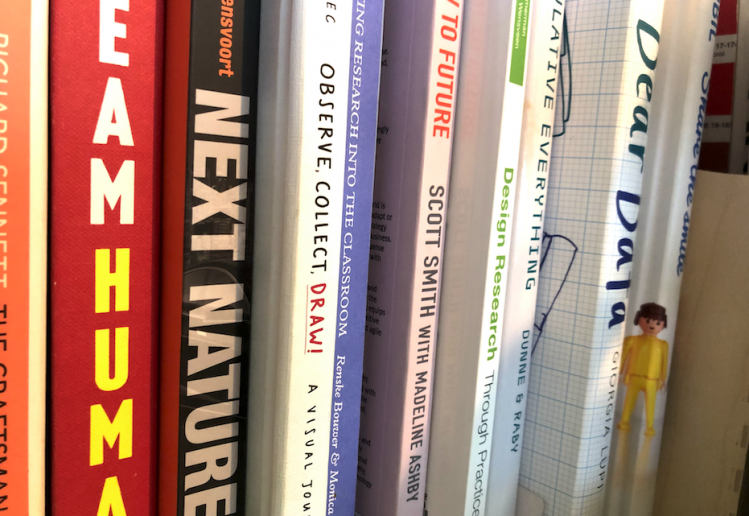I’m frequently asked to share resources on Design Futuring, Speculative Design and Design Fiction. The field is still relatively new, and the terminology not always used as consistently, making it hard to Google for. For that reason, I decided to collect all valuable resources that I’ve used in one page, for both you and I to reference. I’ve split it up into a few categories so you can more easily find what you’re looking for. I am still exploring the field as well, so I might have missed some important resources, let me know in the comments below or at rrnoortman@outlook.com if there’s anything specific that I missed!
To learn more
For those that are new to speculative and futuring practices, I have the following resources that I recommend:
- Speculative Everything by Anthony Dunne and Fiona Raby (2013) | This one is perhaps a little outdated already, but I found it to be a very helpful book to get into the way of thinking that Speculative Design stands for. It compares Speculative and Critical Design to ‘traditional’ design, and has many useful figures to support that line of thought. The project examples are a little artsy for my taste, but interesting to draw inspiration from nonetheless.
- SpeculativeEdu | This is a great collective that has very good resources on their website on the current state-of-the art in the field. Good interviews and interesting discussions to be followed here.
- Design Research Through Practice by Ilpo Koskinen, John Zimmerman, Thomas Binder, Johan Redstrom and Stephan Wensveen (2011) | While it is not really specifically about speculative design or futuring, the Showroom methodology as described in this book is very close to critical or speculative design. It helped me get a grasp on what it means to do research to start discussions and how to position this with regards to other RtD practices.
To do it yourself
For those that are familiar with the methodology but need some help getting started, I can highly recommend the following resources:
- How to Future by Scott Smith (and Madeline Ashby) | A practical guide that explains how to get your own futuring projects going. It has some lovely templates that you can use to get started, that are also available on their website. I really enjoyed how Smith splits the process up into different stages, and carefully explains the purpose and fidelity of each stage.
To get inspiration
For those that want to learn from how others have done it, I recommend taking a look in these places:
- Websites of companies that are doing it | Who better to learn from than those who are getting paid to think about the future? Check out some of my favourites:
- Books by visionaries | Reading new and creative visions can help you detach from current practices and think differently about the world. Here are some that I’ve enjoyed:
- Dystopian/Utopian fiction (books) | I often draw from fiction when working on speculative design projects, although not all are equally useful. These were useful to me:
- The Handmaid’s Tale and The Testaments by Margaret Atwood | I would recommend anything by Margaret Atwood for her incredibly research into human behaviour. I specifically recommend The Handmaid’s Tale and the Testaments because they describe the same world from multiple perspectives, which has inspired me to do the same in my work (also the TV show, though I enjoyed the books more)
- Dystopian/Utopian fiction (series and movies) | When you’re in for some Netflix and chill while doing something kind of useful:
- Black Mirror | Of course, this Netflix Original can’t be missed on this list. It’s eerie, it’s freaky, but it raises interesting and important questions. Seasons 1 and 2 were really good, 3 and 4 were generally good, season 5 was meh. Episodes that I found most compelling: Fifteen Million Merits (S01E02), Be Right Back (S02E01), Arkangel (S04E02)
- Westworld | This is not the most realistic future scenario perhaps, but it asks interesting questions about AI and consciousness, and whether it matters if you’re speaking to a human or a machine. The first two seasons were good, the third was a bit more far-fetched.
To finetune the process
For those that have done speculative and futuring work but want to streamline their process, and their outcomes, I recommend these resources:
